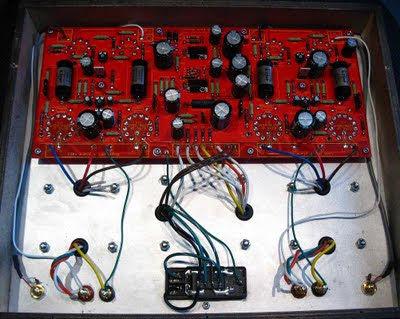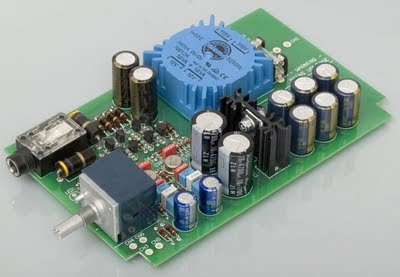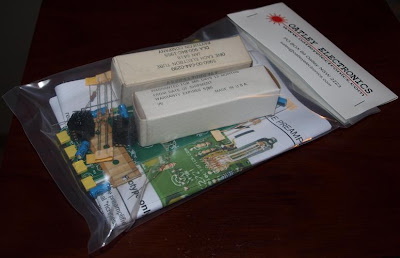
The amplifier circuit is very simple and there are a minimal number of parts in the signal path. The input stage uses a 5751 dual triode in a Shunt-Regulated Push-Pull (SRPP) circuit. The output stage is a Self Inverting Push-Pull (SIPP) amplifier that uses KT88 power tubes. A constant current source (CCS) is used to force the output stage into class-A operation. The power supply is solid-state and there is a turn-on delay. The audio output transformers as well as the power transformers are from Edcor Electronics. The tube amp kit comes complete with a black powder coated steel chassis that includes a ventilated cover for safety. Following the thorough instructions provided with the tube amplifier kit construction of the amp was very straightforward and the kit went together without any difficult. The photo below shows the finished KT88 monoblock tube amplifier kits in use.

Shown in the photograph are the two monoblock KT88 tube amplifier kits, a NAD C521i cd-player, a Behringer SRC2494 used as an up-converting DAC and a DIY Lightspeed attenuator.
The tube amp kits have been in use for about 3 months now and I am very pleased with the monoblock amps. For a detailed review of the tube amp kits and additional notes on the construction of the kit, see the DIY monoblock KT88 Push-Pull Tube Amplifier Kit page.
Additional OddWatt Audio Amplifier Information
- DIY KT88 Push-Pull Monoblock Tube Amp Project
- DIY KT77 Push-Pull Stereo Tube Amplifier Project
- DIY EL84 (6BQ5) Push-Pull Stereo Tube Amp Project
What's Playing: Monty Alexander - The Good Life











































